Abruzzo is one of those regions that has accustomed us to extraordinary marvels, real gems set in a wonderful natural landscape like brilliant light points outlining the profile of a precious jewel; a metaphor that describes Italian beauty very well, isn’t it?
Today we return to this fantastic land, destination Villalago: discover with us what to see and do in this beautiful village enclosed in a splendid setting where every color contributes to design an ever-changing and always breathtaking panorama, from the brown of the mountains to the azure of the sky, from the green of the woods to the blue of Lake San Domenico and Sagittario river, passing through the warm shades of the bricks and the intense white of the snow embracing the town in winter. Let's go!

Villalago: what to see in the village on your trip to Abruzzo
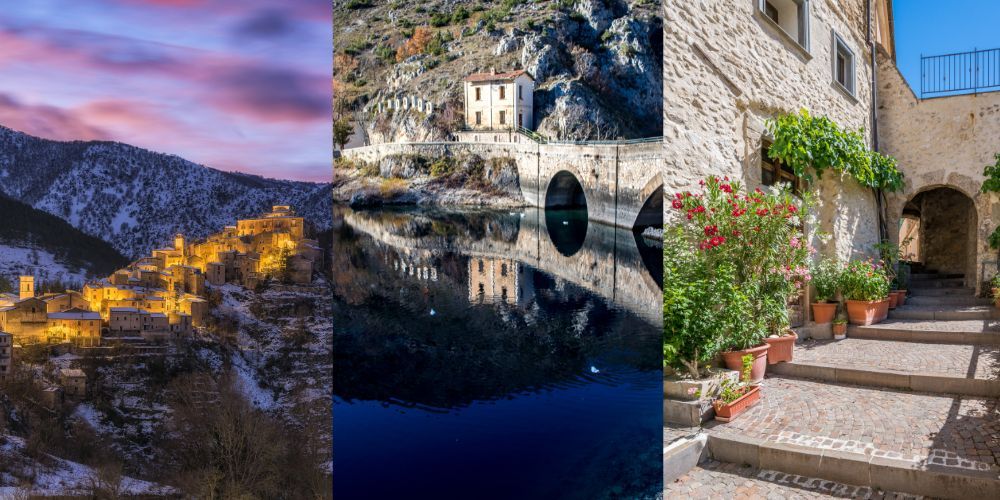
First of all, we imagine you want to know something more about Villalago before preparing for your next trip to Abruzzo; no problem, here we are for you!
Villalago is a small mountain village of a few hundred inhabitants in the province of L'Aquila, located in the incredible beauty of the Abruzzo National Park at over 900 meters above sea level near three lakes of great tourist importance: the small Lake Pio, suitable for bathing, just outside the village centre; the wonderful Lake Scanno, further South towards the namesake town, with its unique heart shape; and the fascinating Lake San Domenico, further North, a true oasis of peace and tranquility where to escape and get in contact with nature and its elements, sounds and scents.
The small town of Villalago is also a true concentration of history where plunging into remote eras, traveling between the pre-Roman and imperial periods up to the era of barbarian dominations following the fall of Rome. And it is specifically in this age that the village began to appear in historical sources with its current name: a name deriving from a simple but effective association of the presence of the lakes with that of numerous roman villae.
So, are we ready to visit Villalago? Discover with us what to see by exploring the streets of this fantastic village and its surroundings!
The medieval Fortress of Villalago
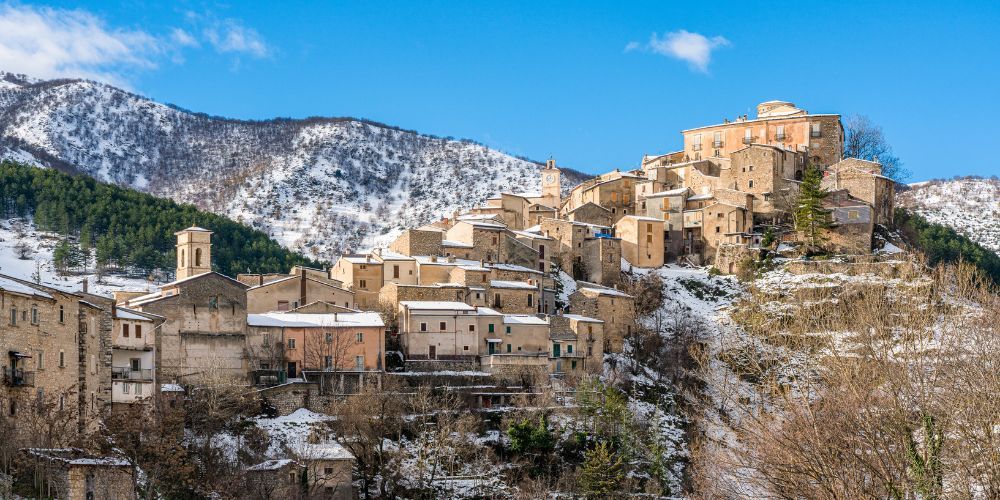
The first major attraction that catches the eye it’s the majestic medieval Fortress of Villalago, a defensive building to keep the territory under control. This very ancient bastion of medieval origin, probably Langobard, was built on the highest point of the hill on which the village rises, with a very broad view of the Sagittario river Valley and the natural panorama of Abruzzo, especially from the top of its high watchtower about ten meters tall compared to the base of the fortress. If you like castles, here's for you another suggestion for this region: check it out!
After more than a thousand years of history, today only the external tower of the original fortress remains clearly visible, which is possible to visit as a belvedere. The other buildings, however, were gradually incorporated into the inhabited village, transforming into homes or characteristic environments used for other purposes. Among these, the former Baronial Palace stands out above all, the main element of the fortress, now hosting the small Museum of Jobs where it is possible to discover a lot of information on the ancient professions of the rural Abruzzo tradition, such as the miller, the fisherman and the shepherd.
The Church of Madonna di Loreto
We continue the tour through the alleys of Villalago going to the Church of Madonna di Loreto, the main religious building of the village, built between the 1300s and 1400s with the original name of the Church of Santa Maria della Villa.
The church belongs to the diocese of nearby Sulmona, another magnificent place to visit in Abruzzo, and is built in Romanesque style, clearly visible especially from its external façade. The internal environment, consisting of a single nave, has instead been redesigned according to the taste of Baroque art starting from the original medieval structure and houses some important examples of sacred art including small altars and oil paintings.
The altar of the minor nave houses a statue of San Domenico di Sora, the saint who gave his name to the lake located near the village. Even the stone tabernacle, dating back to the 1500s, has a great historical value as the only concrete proof testifying to the Benedictine monastery of San Pietro de Lacu, which was located near the hermitage of San Domenico on the namesake lake.
The Old Town Hall of Villalago
The next stage is certainly a must for anyone visiting Villalago: we are talking about the Old Town Hall, one of the symbolic buildings of the village, built in the 1800s and located in the historic center.
The Old Town Hall of Villalago stands on the remains of an ancient church and the architectural design of the building leaves no doubt to the imagination. In particular, from the outside, tourists attention is immediately captured by the civic tower with clock and bell, previously used as a bell tower.
Inside this building it is possible to visit the municipal library, but above all the Ethnographic Museum of Abruzzo Rural Civilization. It is an evocative exhibition that takes visitors on a journey back in time through several rooms, each one dedicated to a specific instrument that characterizes the historical culture of the people of Abruzzo: tools for agriculture, shepherds and fishermen, but also tools for preparing food or the spinning of fabrics, especially wool.
Vilallago: what to see on Lake San Domenico
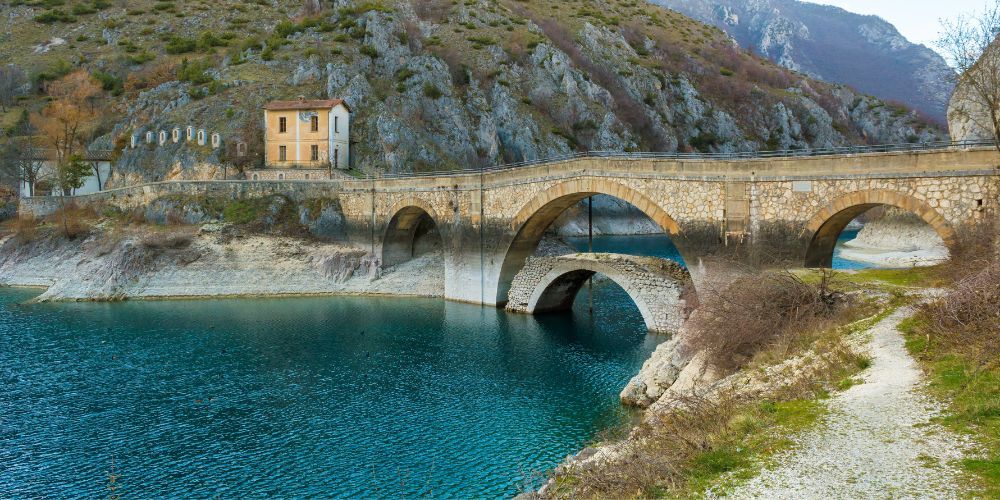
And finally here we are at Lake San Domenico, the most famous and fascinating attraction to visit near Villalago. We’re just outside the urban centre, a little further North, immersed in a lush nature reserve full of paths, glimpses and panoramic views where people can go hiking, dedicate to landscape photography and observe wild animals in the tranquility of place that almost feels surreal. We will cover this topic in another paragraph later.
The origin of this important lake is actually quite recent. Lake San Domenico is in fact of artificial origin and was created about a century ago (1929) with the construction of a dam along the Sagittario river.
Despite this, today Lake San Domenico is among the most popular destinations in the Abruzzo hinterland. Its unmistakable landscape is really iconic, where nature and man's work blend together in a unique combination that is worth capturing with a photograph: it is the evocative scenery of the San Domenico bridge, which delicately divides the waters allowing the passage from one bank to the other, especially towards the hiking area of Prato Cardoso and the beautiful Hermitage dedicated to the saint. Let's visit it together!
The hermitage of San Domenico
Crossing the bridge over the lake, here we arrive at the Hermitage of San Domenico, one of the most enchanting and mystical religious structures in the territory. Originally, the Hermitage consisted of a cave dug into the rock where around the year 1000 it is said that San Domenico di Sora lived, a monk who later became a saint due to some miracles, also artistically represented with some paintings on the inside, dating back to the 1900s and created by the artist Alfredo Gentile from Villalago; in particular, the story tells that San Domenico was able to heal a girl bitten by a poisonous snake and tame a wolf.
The actual small church, today visible and renovated with the dam construction works previosuly mentioned, was built in the 1400s instead; the access portico was built in the 1600s. The interior environment consists of a single nave with some elements in neo-Gothic style, in particular the altar.
The Hermitage of San Domenico also offers a truly special view over the lake, especially through its double-arched window: a spectacular viewpoint to be amazed by the sight of nature here in Abruzzo!
Villalago, what to do at Lake San Domenico: hiking and birdwatching
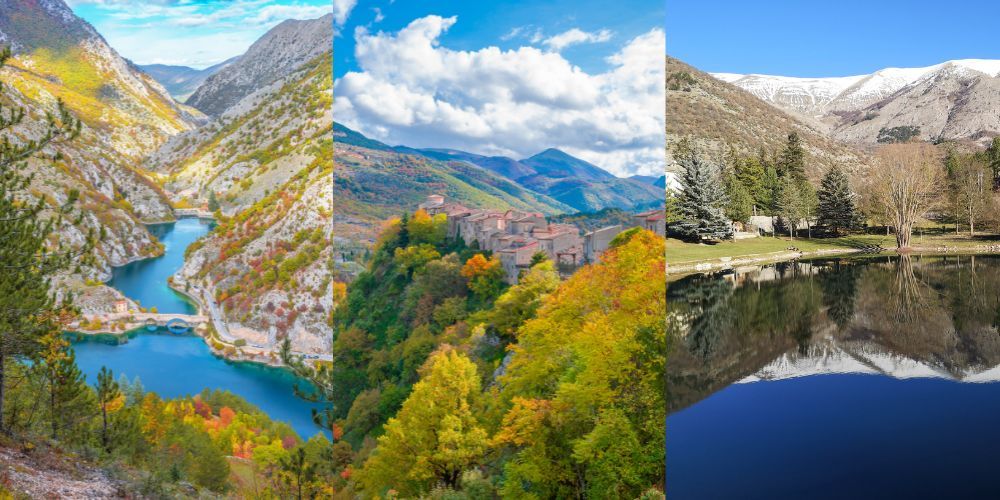
Lake San Domenico and its Hermitage are part of a much larger naturalistic area that embraces this portion of land in the Northernmost part of the Abruzzo National Park: it is the nature reserve of the Sagittario Gorges, towards Anversa degli Abruzzi.
Some might define it as a small earthly paradise where nature still reigns supreme over man, who remains a small and silent presence here. And whoever says this, speaks the truth! If you're wondering what to do in Villalago and its surroundings after visiting the village, here are some tips for venturing into this natural landscape.
If you love hiking and are looking for fantastic new destinations to reach, here you can live truly unique experiences by venturing along the mountain paths that will lead you to discover the peaks of Terratta and Argatone, of Rognone and Genzana. And right climbing over the latter's Western slopes, we recommend two fantastic stages to discover mysteries and truly evocative places: the semi-abandoned village of Frattura, higher up than Scanno, and the mountain church of Madonna Incoronata.
On the other hand, if you prefer to stay at low altitude and enjoy the irresistible quiet of the mountain landscape in close contact with the waters of the lakes and the river, we recommend that you follow the paths leading into the heart of this stupendous natural setting discovering magnificent views and the sweet music produced by the flowing of water.
Furthermore, this beautiful nature reserve is an exceptional place to closely observe many living species that populate this habitat, in particular small rodents such as dormice and squirrels, large herbivores such as deer or even land predators such as foxes, wolves and bears. However, this little corner of paradise is ideal especially for birdwatching: in fact, here live numerous species of aquatic and non-aquatic birds such as ducks, swallows, woodpeckers, blackbirds, hawks and even eagles. For what concerns the flora, in the end, here you can observe maple, beech and willow trees and floral species of cornflower and bellflower.
How to get to Villalago
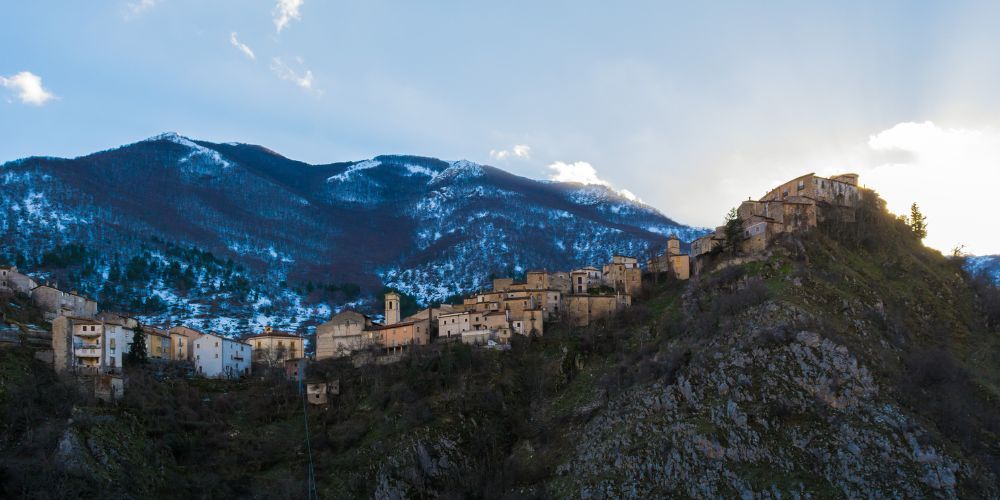
If you're wondering how to get to Villalago, we recommend traveling by car, in particular starting from:
- L'Aquila: drive on the A24 up to Torano, then on the A25 up to Cocullo and finally towards Villalago on the SR479;
- Pescara: take the A25 up to Cocullo and then continue towards Villalago on the SR479;
- Rome: take the A24 up to Torano, between Lazio and Abruzzo, continuing on the A25 towards Pescara up to Cocullo and driving South on the SR479 up to Villalago.
Hey, are you planning to visit Rome? Check out Visit Rome Pass, your pass for the most beautiful experiences in the Italian capital city!
Buy now you Visit Rome PassVillalago, what to do after visiting the village: itinerary to Roseto degli Abruzzi

Before saying goodbye to Abruzzo after another beautiful adventure discovering its villages and nature, we want to suggest you a small itinerary for a fun and tasty experience among the countryside and the unique flavors of this region.
We have to move towards Roseto degli Abruzzi, one of the most beautiful and well-known coastal cities on the Adriatic coast. Getting there is not difficult: following the route previously described to get to Villalago starting from Pescara, you need to drive on the SR479 up to Cocullo and then take the A25 highway until you reach the Villanova exit; quitting the highway from here, you need to continue on the SS602 towards the city, then drive on the SS174 and then the SS16; just continue straight ahead following the coast until you reach to your destination.
And here we are, finally come in Roseto degli Abruzzi starting from Villalago after a car journey of about two hours! But we assure you that we did it for a very good reason... do you want to know more? Click the button below!
Take a jeep tour in Abruzzo among vineyards and olive treesAbout the author
Written on 27/10/2023


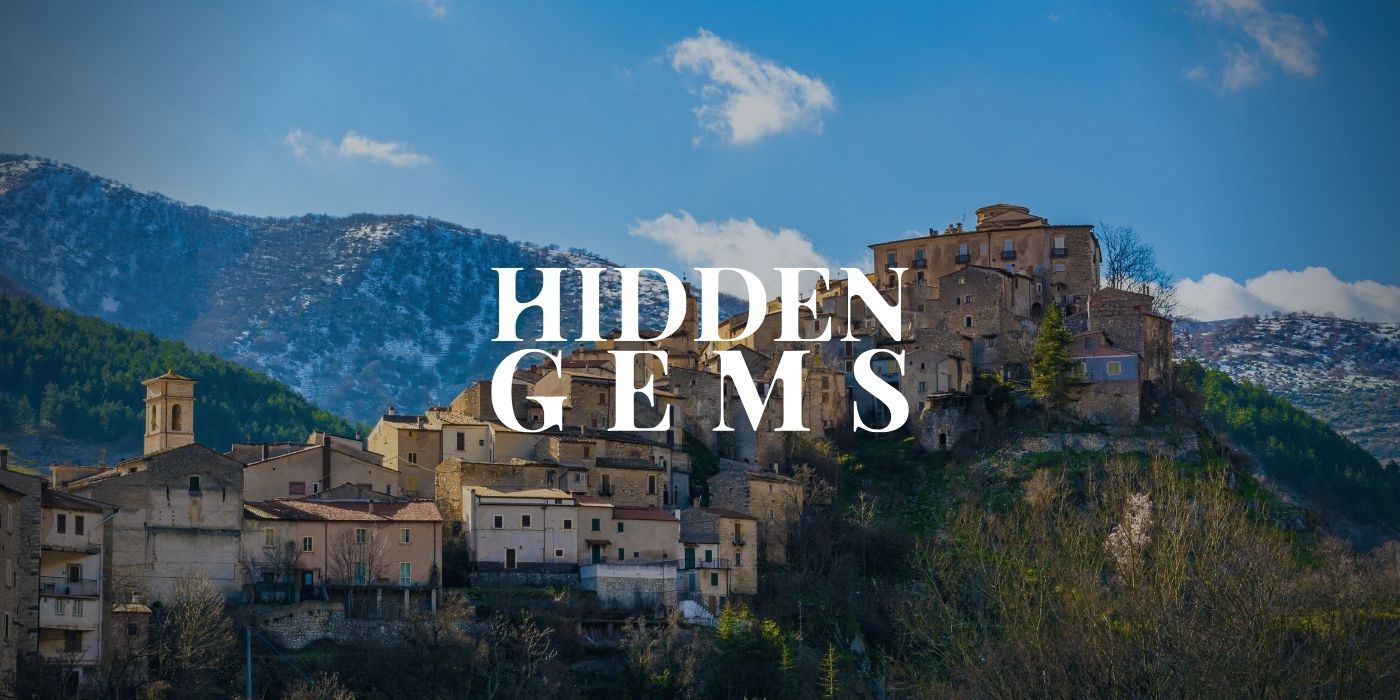
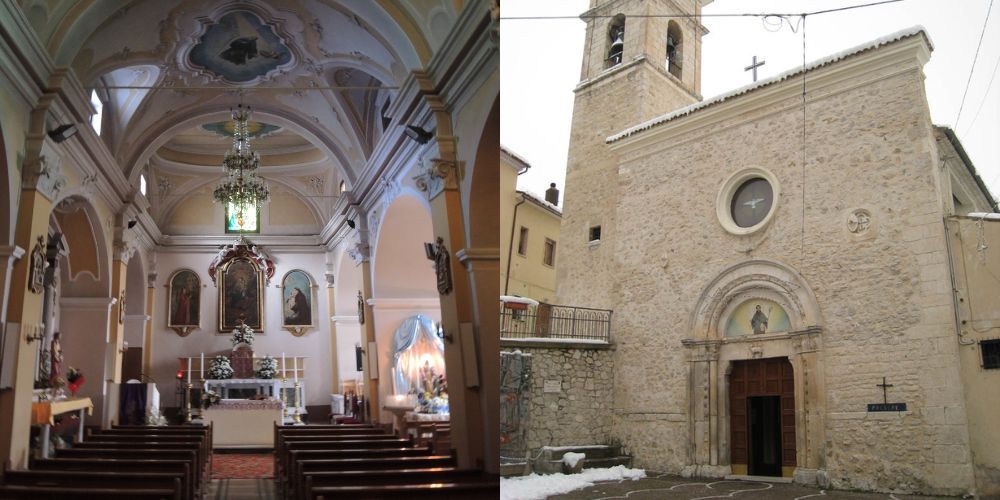

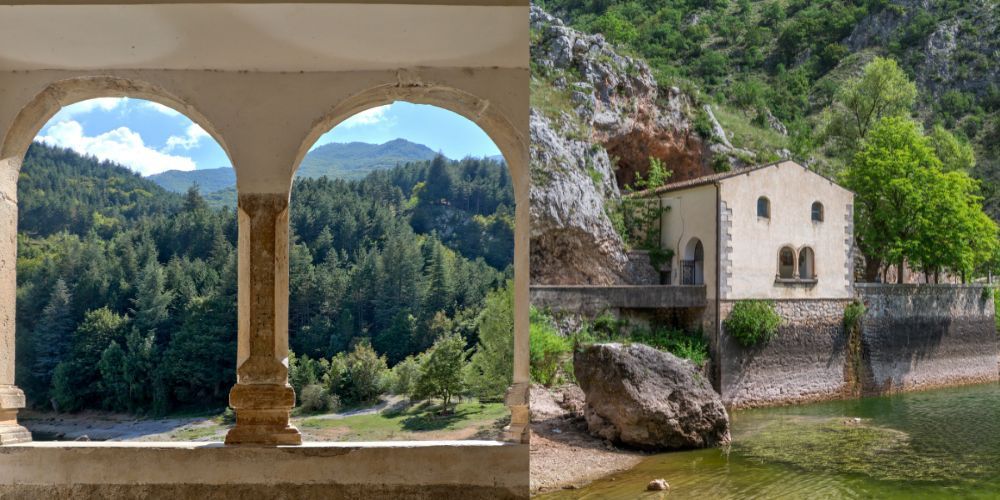
Massimiliano Antonio Primi
A marvel painted in the panorama of Abruzzo overlooking Lake San Domenico: it's Villalago! Let's find out what to see and what to do in this village.